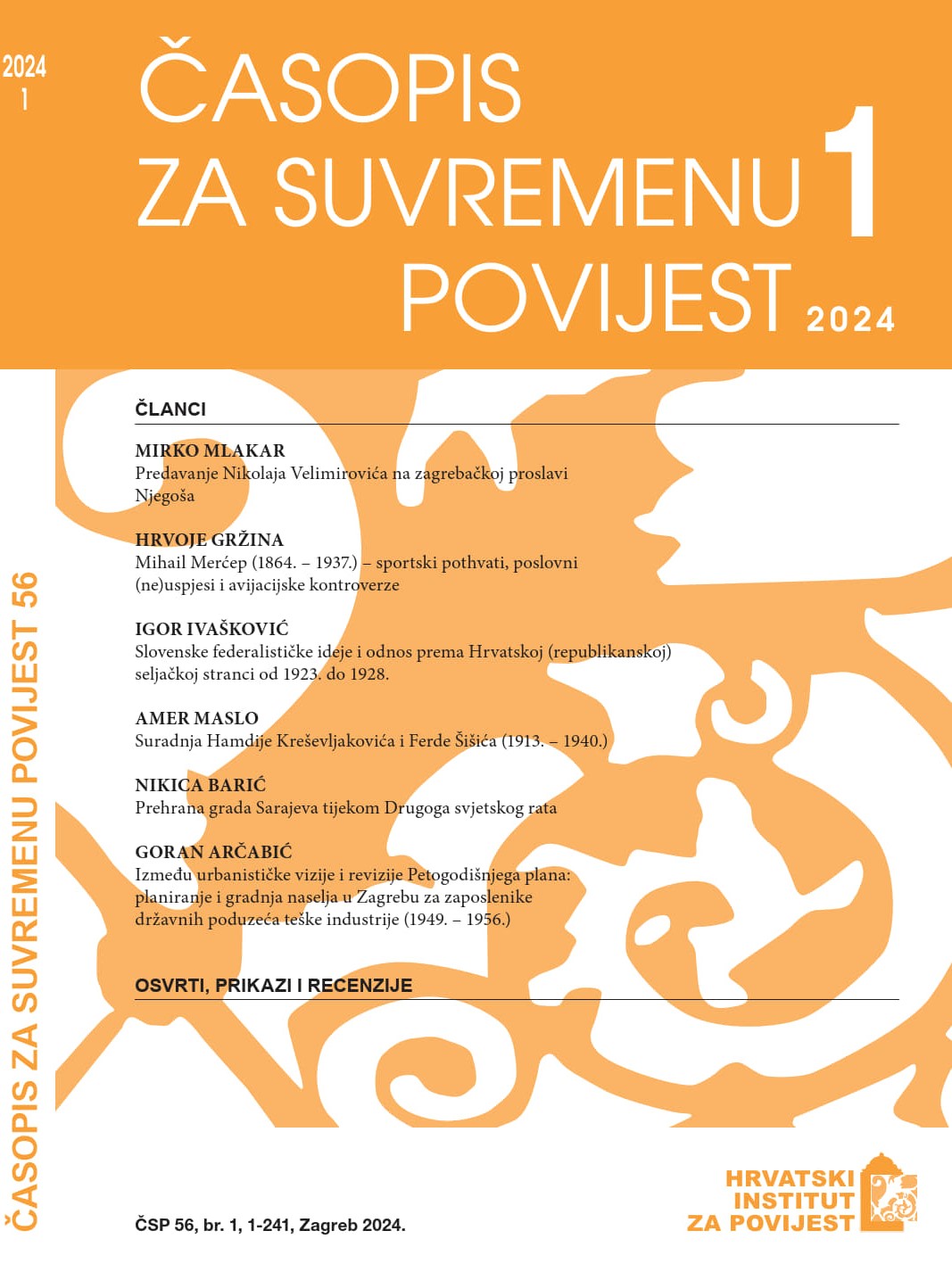Between the Urban Vision and the Revision of the Five-Year Plan: Planning and Construction of Settlements in Zagreb for Employees of State-Owned Enterprises of Heavy Industry (1949 – 1956)
DOI:
https://doi.org/10.22586/csp.v56i1.27722Keywords:
Five-year plan; Zagreb; urban planning; residential construction; workers’ estates; heavy industry; Prvomajska; Steam Boiler Factory; Jedinstvo; Rade KončarAbstract
The consequences of the economic blockade and the new political and security situation after the Cominform resolution of June 1948 had threatened the goals and dynamics of implementation of the first Yugoslav Five-Year Plan. Therefore, in 1949, state investments in the economy and housing were reduced as part of a broader revision process of the Five-Year Plan. In part, savings were made achieved by the cancellation of reduction of funds and resources previously intended for the construction of housing estates for employees of state-owned enterprises. In Croatian historiography, there are no comprehensive studies on this topic.
This paper advances the hypothesis that the economic blockade of the FPRY and the political decisions of the Yugoslav leadership to reduce funds and resources previously intended improvement of the standard of living had a decisive influence on the realization of three settlements in Zagreb. In 1949 the Urban Planning Institute of Croatia drew up the plans for three new workers' neighborhoods for employees of companies in the Federal Ministry of Heavy Industry and planned for completion of the construction by the end of the Five-Year Plan (1951).
However, the "cutting" of amounts intended for the construction of residential and public buildings, the "deletion" of certain buildings from the investment plans, revisions of architectural projects with the aim of savings, and other administrative procedures resulting from the federal administration decisions had a direct impact on the reduction of the contents in the settlement and the change of construction dynamics. The dynamics slowed down significantly. In the mid-1950s, only some of the residential buildings in the cores of the new settlements were built according to the original plans of 1949, while a significant part of the residential and public facilities still needed to be accomplished. Ultimately, the settlements were only partially constructed according to the original planning documentation and remained unfinished. The paper also tries to confirm that the reduction of investment in the construction of workers' settlements since 1949 contributed to the fluctuation and shortage of qualified workers in heavy industry companies. The post-war visions of modern housing were realized only in the following decade, when the foreign political and economic situation stabilized and the strengthened construction industry began using prefabricated elements in housing construction.
Downloads
Published
How to Cite
Issue
Section
License
Copyright (c) 2024 authors and journal

This work is licensed under a Creative Commons Attribution-NonCommercial 4.0 International License.
Copyright holders are the publisher Croatian Institute of History and the authors. Journal of Contemporary History is an Open Access journal. Users are allowed to read, download, copy, redistribute, print, search and link to material, and alter, transform, or build upon the material, or use them for any other lawful purpose as long as they attribute the source in an appropriate manner according to the Creative Commons licence CC BY-NC. The papers published in Journal of Contemporary History can be deposited and self-archived in the institutional and thematic repositories providing the link to the journal's web pages and HRČAK. Journal does not charge article processing charges (APC). The editors assume no responsibility for statements of fact or opinion made by contributors.




